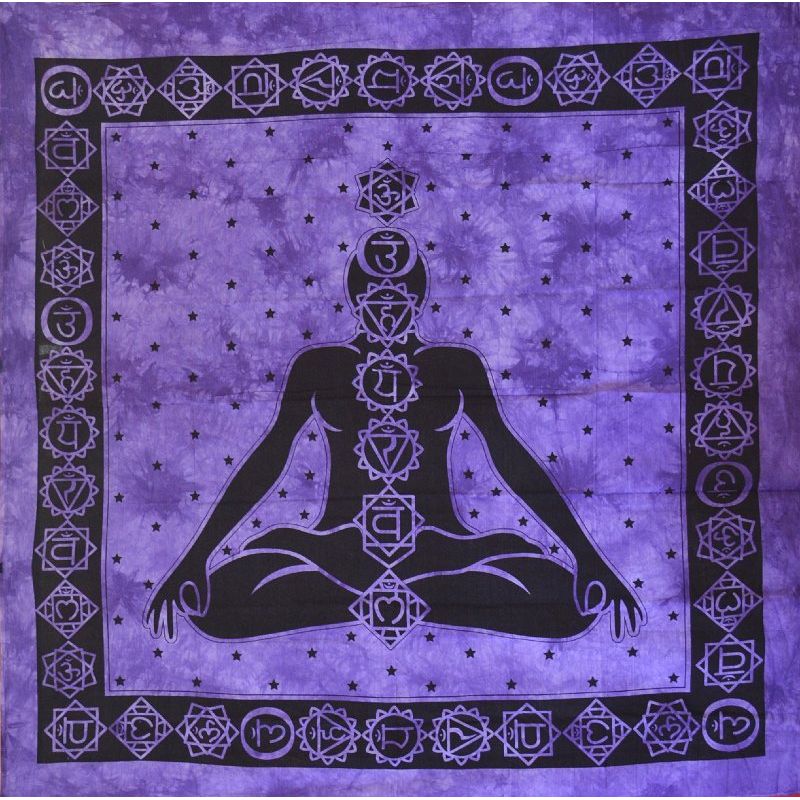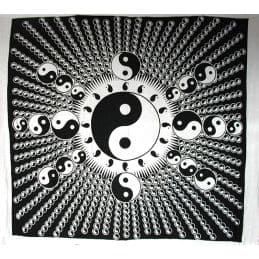Large Indian Wall Tapestry - Yogi Meditation with the 7 Chakras
Dimensions: 2.20 meters by 2.10 meters
Textile Material: Cotton
Origin: India
The Lotus posture, "Padmasana" in Sanskrit, is a classic yogic meditation position often associated with the seven chakras (energy centers in the body):
Root Chakra (Muladhara): The Lotus posture begins with sitting cross-legged, placing the feet on the opposite thighs. This serves as the foundation of the posture, grounding the practitioner to the earth, in connection with the root chakra.
Sacral Chakra (Svadhisthana): The pelvis is slightly tilted forward, stimulating the sacral chakra, the center of creativity and sexual energy.
Solar Plexus Chakra (Manipura): The spine is upright, and attention is focused on breathing. This posture encourages well-being in the solar plexus region, the center of inner strength.
Heart Chakra (Anahata): The heart is open, and the shoulders are relaxed, promoting a sense of love, compassion, and connection.
Throat Chakra (Vishuddha): The spine is upright, encouraging clear communication and creativity, related to the throat chakra.
Third Eye Chakra (Ajna): Eyes are closed during meditation, enhancing concentration and inner exploration, in connection with the third eye chakra.
Crown Chakra (Sahasrara): By meditating in the Lotus posture, the crown chakra, the center of spirituality and connection to a higher consciousness, is also stimulated and balanced.
The Lotus posture is used to facilitate deep meditation and the search for inner harmony. It balances the energies of the body and mind, promoting a sense of peace, well-being, and spiritual understanding.























